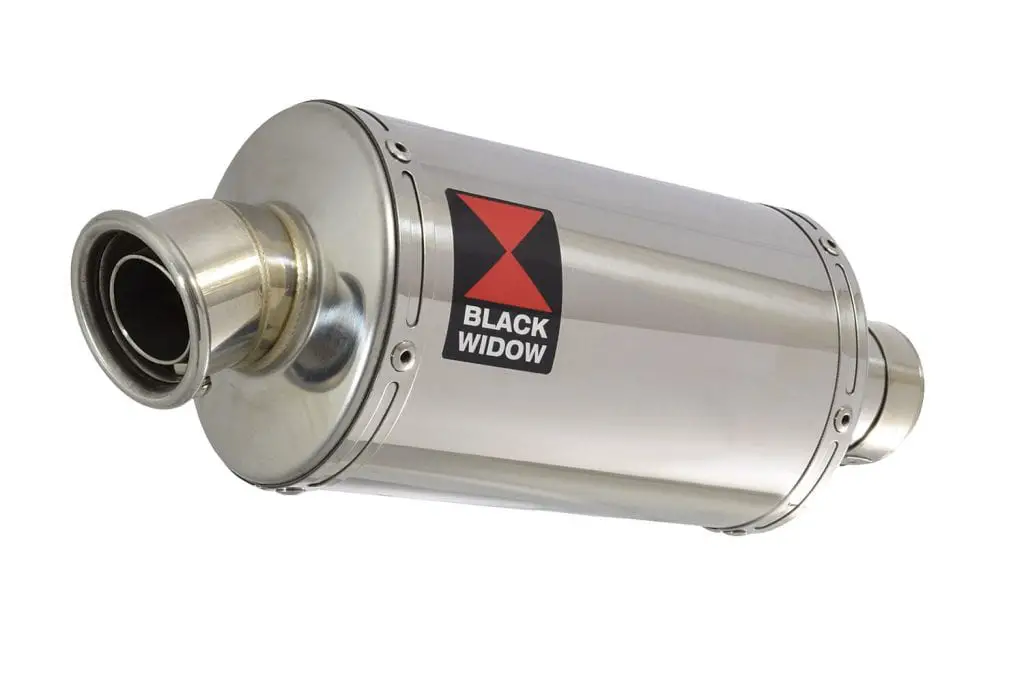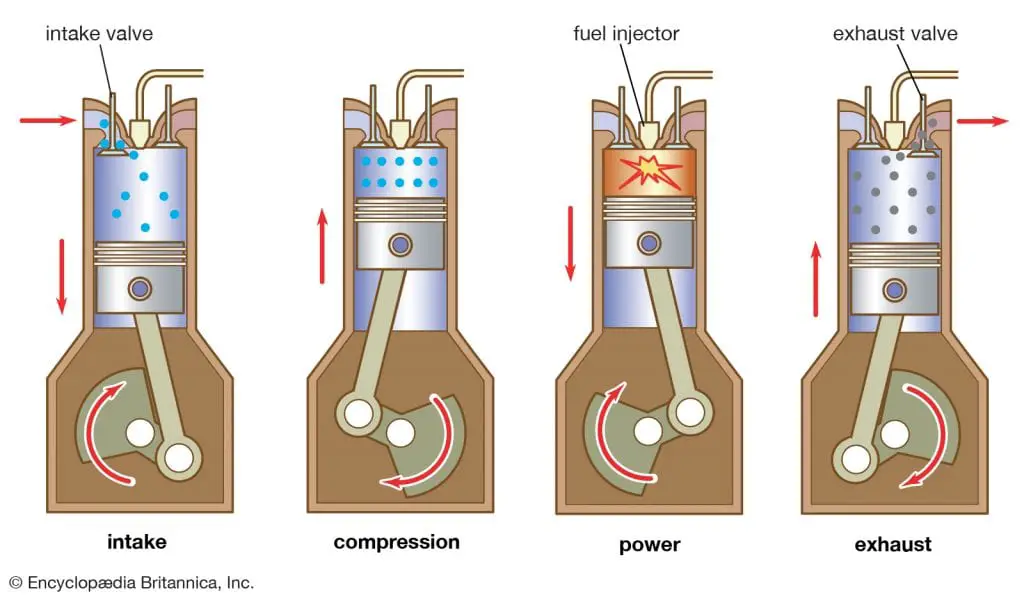A slip-on exhaust can look super cool, aggressive and make your motorcycle sound downright awesome – but can they damage your engine?
That’s the question of the day. In this article, I will discuss slip on exhausts in detail and tell you how they work. I will also cover the most common myths and conceptions around aftermarket exhausts. If you are an enthusiast, you gotta read ‘em all, bud.
For a quick answer, a slip on exhaust will not damage your motorcycle engine. The changes done by a slip-on are not big enough to cause any significant change in air flow. Also, slip-ons do not replace critical components like CATs and O2 sensors.
Why Slip On Exhausts Will Not Damage Engine
Here’s a list of reasons why slip-on exhausts will not cause any engine damage. Go through all these points and then feel the relief (then go ahead and buy the slip-on).
- Change in air flow is small. The change in airflow is insignificant. A slip-only changes the end portion of your exhaust – usually the muffler. You still have the same air/fuel ratio.
- Change in backpressure is small. Some people have the misconception that backpressure helps in performance. This is not true. Even if it’s true, the change in backpressure is insignificant!
- Critical components are not changed. Critical components like CATs and O2 sensors live in the midpipe. These are not changed by a slip-on. So don’t expect any warning indicator to show up.
- Easy installation. Installing a slip-on is easy. There are very less chances for you to mess it up and somehow cause engine damage (even if you are a beginner).
Was that enough? I hope not. Because I have more things to discuss with you regarding slip-ons or aftermarket exhausts in general.
Let’s understand what happens internally and address the common myths and misconceptions.
What Happens Internally When You Install Slip On Exhaust
Most enthusiasts equip slip on exhausts for the looks and sound – NOT performance.
Aftermarket slip on exhausts come with performance mufflers that are less restrictive. They allow exhaust gases and sound waves to pass through easily – resulting in a louder engine sound.

Slip on exhaust with less restrictive muffler inside.
When people talk about engine damage from exhausts, they talk about an incorrect air/fuel ratio – causing your engine to run lean.
In theory, a slip on exhaust increases the amount of available air in the combustion chamber – and if not tuned, will cause an engine to run lean and overheat.
In theory, that’s true, but in practice, the air flow changes by a slip on are so small – they are negligible. Let me explain more.
What’s Air / Fuel Ratio In A Combustion Engine?
To generate power a motorcycle engine uses a mixture of air and fuel to combust and generate power. The ratio of air and fuel in the combustion chamber must be correct.
Too much air and your engine will run lean – which means there’s not enough fuel to burn off the entire oxygen particles in the air.
Lean mixture reduces performance and overheats the engine because there are lesser fuel molecules to also absorb heat.
Too much fuel and your engine will run rich – which means there’s excess fuel that will not burn and escape out through the exhaust system. Rich mixture will decrease your fuel mileage.

Notice a combustion takes in air from intake valve and it takes in fuel from fuel injector. The air/fuel ratio must be perfect.
Why Slip Ons Will Not Impact Air / Fuel Ratio
When combustion is created, it generates exhaust gases as byproducts. These exhaust gases must leave the combustion chamber to give room for new air in the next combustion cycle.
In theory, the less restrictive muffler from a slip on exhaust causes exhaust gases to flow and exit quicker – providing more room for air in the combustion chamber.
And if you remember, extra air with the same amount of fuel will tweak your air/fuel ratio and make your engine run lean.
The only fix to this is to tune your motorcycle – so it injects more fuel until the air/fuel ratio becomes correct again.
All these are absolutely true in theory. However, the less restrictive muffler from a slip on will not impact the air flow as much. Which means, the change in air/fuel ratio is negligible.
Your motorcycle will run the same. It will not run lean and it will not gain any performance! So don’t worry about it.
Will Change In Backpressure Hurt Motorcycle Engines?
Because a slip on exhaust uses a less restrictive muffler, exhaust back pressure should be reduced. Will this damage engine? (short answer – no)
Let me explain a bit more about exhaust back pressure – which has been a hot debate for as long as I can remember.
Some enthusiasts say you need a little of them for an engine to work. While others say back pressure is always bad for any engine performance and it’s not required at all!
I fall into the latter category. I believe back pressure is not required at all and people are confusing back pressure with exhaust scavenging. Let me explain the difference.
Exhaust Backpressure
Exhaust back pressure refers to the air pressure that exists from the exhaust system and back.
With some high school science, we know that air particles always want to travel from high pressure areas to low pressure.
In a combustion engine, you always want the air pressure in the combustion chamber to be higher than the exhaust system. This way, exhaust gases from the combustion chamber can easily escape out from the combustion chamber.
If exhaust back pressure is low, this is achieved. Exhaust gases can easily escape out and give more room for air (oxygen) in the combustion chamber.
Low back pressure is always good if you want more performance. The more air you have in your combustion chamber, the more fuel you can inject and create that bigger combustion and horsepower.
If back pressure is high, exhaust gases from the combustion chamber will not want to move out from the combustion chamber.
This means the combustion chamber remains occupied. No fresh air can enter in the next combustion cycle – causing your motorcycle engine to produce weak combustion and horsepower.
See what I mean? Exhaust back pressure is never a good thing if you want performance.
Exhaust Scavenging
Exhaust scavenging is the pulling effect that’s created when exhaust gases are travelling forward at high speed – they create lower pressure areas behind them and this helps to pull other exhaust gases forward.
Too complicated? I think so too. Let me explain more.
When exhaust gases travel in the exhaust system, they travel in pulses. Each pulse moves forward at high speed, and pushes away air particles in front of them.
This in turn, creates a trail of low pressure areas behind each pulse. These low pressure areas act as vacuum – they pull more exhaust gases towards them. Remember, air particles always want to travel to low pressure areas.
This is known as exhaust scavenging and it’s always a good thing – it improves exhaust flow even more.
You want as much exhaust scavenging as possible. Aftermarket exhausts that use narrow piping help in maximizing this scavenging effect.

When an exhaust pulse travels forward (see H), it pushes away air particles in their path. This creates a low pressure area behind them that helps pull more exhaust gases.
Can You Install Slip On Exhaust Without Tuning (Or Remap)?
Absolutely! You shouldn’t waste your money on tuning just because you have installed a slip on – no significant change has been made to make your motorcycle run differently.
My view is this – If you are thinking of getting a tune because you are scared that your engine runs lean after installing a slip on, then don’t worry about it. You don’t have to tune. Your motorcycles will run just the same.
If you want to tune not because you are afraid of running lean but because you want to tweak some parameters to improve the riding experience, then go ahead!
There are many things you can play around with, when you decide to go for a tune. Things like adjusting throttling response, more aggressive air/fuel ratio and ignition timing can make all the difference.
Here’s an article I wrote about tuning for exhaust installation. Do You Have To Tune Motorcycle After Installing Exhaust?
What Can Actually Damage Your Motorcycle Engine?
As I said, installing a slip on exhaust will not cause any engine damage and will not make your engine run lean.
Instead, here are two common points that do cause engine damage if you are not careful.
- Reves too much and too often. Your motorcycle will sound great after a slip on installation. Don’t be tempted to rev 24/7. I see this being done all the time. Enthusiasts can’t get over the aggressive sound and end up revving their engine until it’s damaged.
- Running straight pipe. Straight pipe means removing mid pipe, CAT and muffler from your exhaust system. Doing this can indeed give you monster sound and remove back pressure. However, many things could go wrong with this setup. Please avoid it.
My Personal Take
If you only want a great sound and look, go ahead and install that slip on exhaust already. It’s relatively cheap, does not require tuning and will not cause engine damage.
If you are still not convinced and want to eliminate any risk of damage, then you could look into installing a Power Commander.
Power Commander is a very popular installation for enthusiasts with aftermarket exhaust. A power commander allows you to easily configure your ECU without any technical expertise.
Check out this article if you want to know more about Power Commander and tuning. How Much Does It Cost To Tune Motorcycle?


